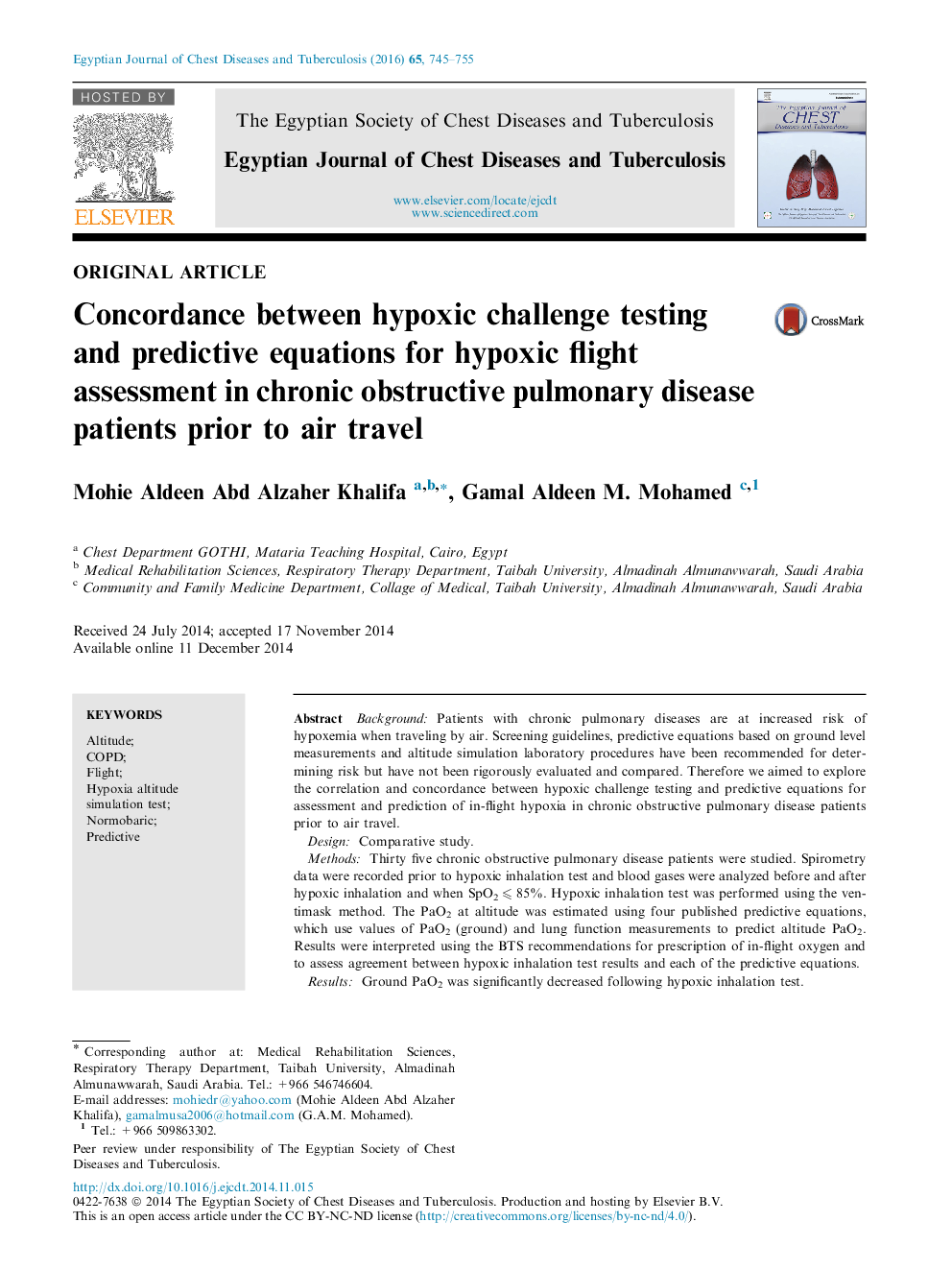| Article ID | Journal | Published Year | Pages | File Type |
|---|---|---|---|---|
| 3399796 | Egyptian Journal of Chest Diseases and Tuberculosis | 2016 | 11 Pages |
BackgroundPatients with chronic pulmonary diseases are at increased risk of hypoxemia when traveling by air. Screening guidelines, predictive equations based on ground level measurements and altitude simulation laboratory procedures have been recommended for determining risk but have not been rigorously evaluated and compared. Therefore we aimed to explore the correlation and concordance between hypoxic challenge testing and predictive equations for assessment and prediction of in-flight hypoxia in chronic obstructive pulmonary disease patients prior to air travel.DesignComparative study.MethodsThirty five chronic obstructive pulmonary disease patients were studied. Spirometry data were recorded prior to hypoxic inhalation test and blood gases were analyzed before and after hypoxic inhalation and when SpO2 ⩽ 85%. Hypoxic inhalation test was performed using the ventimask method. The PaO2 at altitude was estimated using four published predictive equations, which use values of PaO2 (ground) and lung function measurements to predict altitude PaO2. Results were interpreted using the BTS recommendations for prescription of in-flight oxygen and to assess agreement between hypoxic inhalation test results and each of the predictive equations.ResultsGround PaO2 was significantly decreased following hypoxic inhalation test.ConclusionsThe present study supports on-HCT as a reliable, on-invasive and continuous methods determining the requirement for in-flight O2 are relatively constant. Predictive equations considerably overestimate the need for in-flight O2 compared to hypoxic inhalation test. Predictive equations are cheap, readily available methods of flight assessment, but this study shows poor agreement between their predictions and the measured individual hypoxic responses during HCT.
